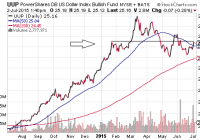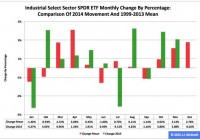Weak Wages And Weaker Manufacturing, But How ‘Bout Those Rate Hike Expectations!
When half of the employed folks make less than what it takes to support one’s self, the wage growth required for a stronger economy cannot suddenly appear. Rather, increases in consumption must rely entirely on low-rate debt binging. Crafting a positive spin on the economy should not be a substitute for frank discussions on the actual state of affairs. I started working at the age of 13. I wanted to be productive. I wanted to make money. Gardener, golf caddy, food deliverer, waiter, bartender, entrepreneur, researcher, analyst, writer, planner, adviser, money manager – I probably spent as much time cursing and complaining as I did whistling. Nevertheless, thirty five years of work contributed to my well-being as well as the well-being of others. Will people from my generation (“Gen X”) leave the workforce anytime soon? Not if we intend to maintain our lifestyles. In fact, Gen Xers aren’t slated to begin retiring in earnest until 2030. We may have grown up as apathetic slackers, yet studies routinely demonstrate that those born between 1961 and 1981 are exceptionally industrious. (Good looking too.) So why are Gen Xers and post-World War II baby boomers leaving the workforce at an accelerated pace during this economic recovery? For example, today’s jobs report celebrated the creation of 223,000 new jobs in June and a 5.3% unemployment rate, while barely mentioning that 432,000 civilian workers disappeared from the labor force altogether. At present, a record 93.6 million of the U.S. working-aged population are no longer in the picture, resulting in the employment rate/participation rate hitting 1977 levels of 62.6%. It actually gets worse. There are roughly 100 million Americans out of 160 million Americans considered by the Bureau of Labor Statistics ( BLS ) as fully employed. Yet it has been estimated that 1/2 of those 100 million earn less than $15,000 annually as part-timers or self-employed workers. Should we really be declaring an annual income of $15,000 as sufficient for a spot in the full-time work column? Houston, we’ve got a problem. And I’m not even referring the planned layoffs across the oil and gas space. For one thing, when half of the employed folks make less than what it takes to support one’s self, let alone support children or elderly family members, the wage growth required for a stronger economy cannot suddenly appear; rather, increases in consumption must rely entirely on low-rate debt binging. Can you say, low rates for longer? Secondly, crafting a positive spin on the economy should not be a substitute for frank discussions on the actual state of affairs. Specifically, popular media outlets like the Associated Press have little business calling a tepid jobs report “solid.” In the absence of any month-over-month wage growth? In spite of downward revisions to job growth in prior months? With employment gains only keeping up with population gains? Indeed, the Associated Press even acknowledged that the employment rate/workforce participate rate fell because people out of work gave up on the pursuit and no longer count in the unemployed tally. How exactly is this a topnotch turn of events? There are two key ramifications of today’s data from the BLS as well as ancillary manufacturing data from the U.S. Census Bureau. First, the idea that the dollar can only move higher in light of China uncertainty and euro-zone complications is flawed. Expectations for the timing and the extent of rate hikes by the Fed continue to diminish with every lackluster economic presentation. Since the dollar had already priced in the end of quantitative easing in the U.S. and the eventual beginning of eurozone quantitative easing, I’m more inclined to expect the dollar via the PowerShares DB USD Bull ETF (NYSEARCA: UUP ) to end 2015 very near where it is today. Next, prominent sector investments like industrials and transports will continue to underperform. Simply stated, factory orders have fallen in nine out of the last 10 months; the seasonally adjusted year-over-year decline in factory orders is 6.3%. Strong dollar excuses notwithstanding, this type of data is entirely recessionary. In fact, it’d be difficult to find a period where the weakness in demand for U.S. manufactured goods was this low and it wasn’t associated with economic recession. As I have discussed on many prior occasions, one does not necessarily need to pare back core positions like the iShares S&P 100 ETF (NYSEARCA: OEF ). Not unless one is employing a disciplined approach to risk reduction . Still, if you have been holding onto an allocation to the Industrial Select Sector SPDR ETF (NYSEARCA: XLI ) or the iShares Transportation Average ETF (NYSEARCA: IYT ), consider taking profits. Technical analysis of the sectors suggest further erosion of price, and neither the BLS employment data nor the U.S. Census Bureau manufacturing data indicate a quick turnaround. Disclosure: Gary Gordon, MS, CFP is the president of Pacific Park Financial, Inc., a Registered Investment Adviser with the SEC. Gary Gordon, Pacific Park Financial, Inc, and/or its clients may hold positions in the ETFs, mutual funds, and/or any investment asset mentioned above. The commentary does not constitute individualized investment advice. The opinions offered herein are not personalized recommendations to buy, sell or hold securities. At times, issuers of exchange-traded products compensate Pacific Park Financial, Inc. or its subsidiaries for advertising at the ETF Expert web site. ETF Expert content is created independently of any advertising relationships.

